Donatello (1386 – 1466) was Italian artist who was the leading sculptor of the early Renaissance. He gave a different direction to Western art taking it away from the prevalent Gothic style, which was marked by softly curved lines and an expressionless face, to the Classical style with dramatic expressions and detailed realism. Donatello pioneered several artistic techniques, like schiacciato (flattened out). His techniques and works would have a profound and immense influence on later generations of Renaissance artists. Know about the art of Donatello by studying this 10 most famous works.
#10 The Feast of Herod
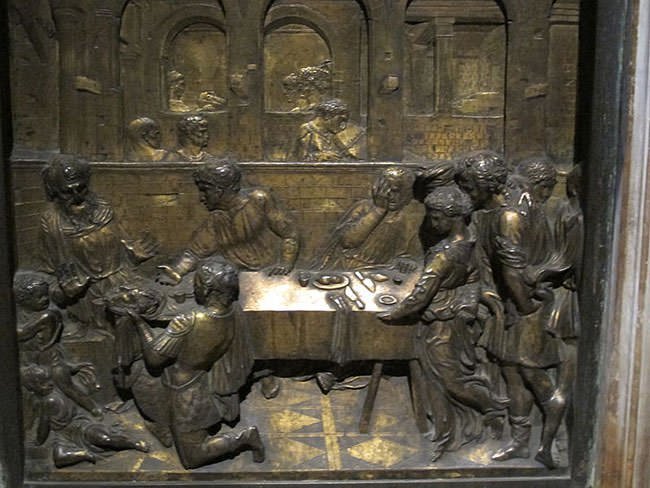
| Type: | Bronze Relief |
| Location: | Siena Cathedral, Siena, Italy |
| Year: | 1427 |
The Feast of Herod is one of Donatello’s earliest relief sculptures and his first bronze relief. It depicts an executioner presenting the severed head of John the Baptist after Salome asked king Herod Antipas for John’s head on a platter. Filippo Brunelleschi was the leading architect of his era and a friend of Donatello. He had developed a technique for linear perspective. Taking inspiration from Brunelleschi’s technique, Donatello first showcased his command of scientific linear perspective in this famous relief. The inclusion of linear perspective would later become a standard element in Renaissance painting and sculpture.
#9 Saint Mark

| Type: | Marble Statue |
| Location: | Orsanmichele, Florence, Italy |
| Year: | 1413 |
Donatello’s initial works like the Marble David were carried out in the Gothic style, which was the prevalent style for sculpture at the time. It was in his marble statues of St. Mark and St. George that he first completely moved away from the Gothic style towards classical techniques. For the first time since Classical antiquity the human personality was shown with such confidence in its own worth and the expressions were so dramatic and emotional. Donatello’s St. Mark is also known for its natural pose, detailed realism and a much more naturalistic style than prevalent in the age.
#8 Works for St. Anthony of Padua
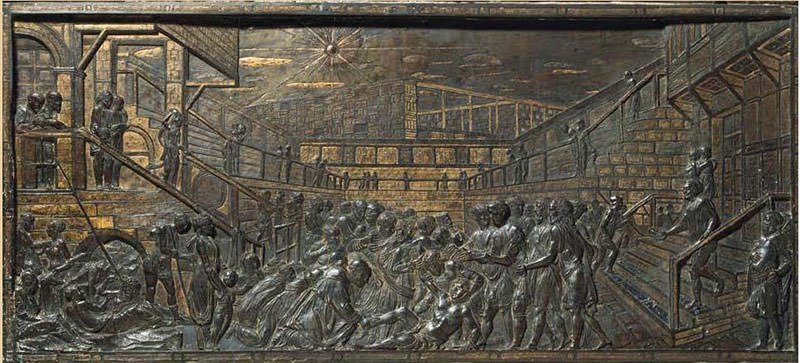
| Location: | Basilica di Sant’Antonio, Padua, Veneto, Italy |
| Year: | 1447 – 1450 |
Sometime around 1450, Donatello undertook a massive project for the church Saint Anthony of Padua. His work contained 7 life-size bronze statues, 21 bronze reliefs of various sizes, and a large limestone relief. Unfortunately today we can have no idea of the true architectural arrangement of all this material as it was taken down a century later and the reconstruction of 1895 is wrong both aesthetically and historically. Renowned among the work Donatello did for the Paduan Church is a splendidly expressive bronze crucifix and four extremely important reliefs with scenes from the life of St. Anthony for the high altar.
#7 Judith and Holofernes
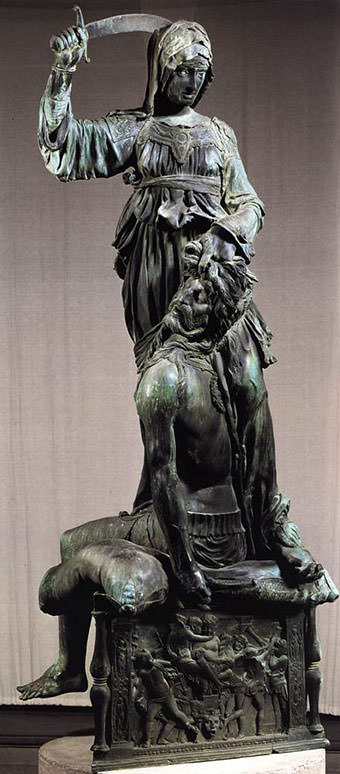
| Type: | Bronze Statue |
| Location: | Palazzo Vecchio, Florence, Italy |
| Year: | 1460 |
In the Book of Judith, Holofernes was the invading general of the powerful Nebuchadnezzar who had given him the task to destroy the nations of the west who wouldn’t regard him as the only God. When Holofernes was about to take over the biblical city of Bethulia, it was saved by a beautiful Hebrew widow named Judith who seduced him and beheaded him while he was drunk. This masterpiece depicts that assassination. It is remarkable for being among the earliest freestanding bronze Italian Renaissance statues and one of the first to be conceived in the round, with its four distinct faces.
#6 St. George Killing the Dragon

| Type: | Marble Relief |
| Location: | Museo Nazionale del Bargello, Florence, Italy |
| Year: | 1417 |
Relief is a sculptural technique where the sculpted elements remain attached to a solid background of the same material. It had always been a problem for sculptors because it must follow a narrow path between the two-dimensionality of painting and the three-dimensionality of full-round sculpture. Donatello introduced his bold new mode of relief in this sculpture. The technique is known as schiacciato (flattened out) and in it the plane is only very slightly lower than the sculpted elements creating the illusion of depth and figures moving in space. Schiacciato strongly influenced later relief sculpture. St. George Killing the Dragon is also famous for being one of the first examples of central-point perspective in sculpture.
#5 Zuccone
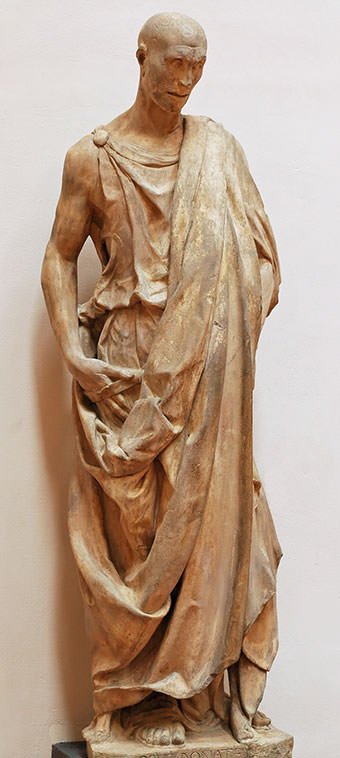
| Type: | Marble Statue |
| Location: | Museo dell’Opera del Duomo, Florence, Italy |
| Year: | 1425 |
Between 1415 and 1426, Donatello created five statues for the campanile or bell tower of the Florence Cathedral in Italy. This work is most famous of the five campanile statues and considered one of the most important marble sculptures of the 15th century. Though it is not known with certainty, many believe that it depicts the Biblical figure Habakkuk which is why it is also known as the Statue of the Prophet Habakkuk. The popular name for the statue Zuccone means pumpkin and comes from the fact that the figure is bald. The statue is known for its realism and naturalism and it is said that it was Donatello’s favorite and he used to swear by the sculpture, “By the faith I place in my Zuccone.”
#4 Saint George
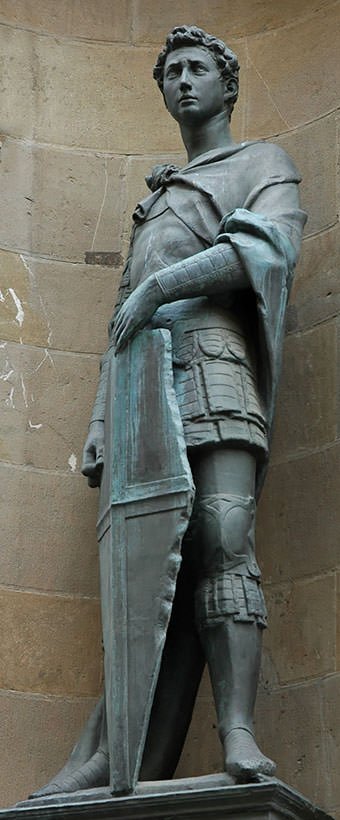
| Type: | Marble Statue |
| Location: | Bargello Museum, Florence, Italy |
| Year: | 1417 |
Along with his Saint Mark, this statue is considered his earliest work which displays his radical move away from the prevalent Gothic style. St. George is considered by many art historians as the piece which more than any other changed the direction of the art of sculpture. In it Donatello showcases deep knowledge of the human figure at rest and brilliantly captures the tension between repose and action. The monumental simplicity and power of the piece is achieved by subtle manipulation of the planes and technical brilliance in carving the marble. It is not only among Donatello’s masterpieces but also had a profound and long lasting influence on Renaissance sculpture.
#3 Penitent Magdalene
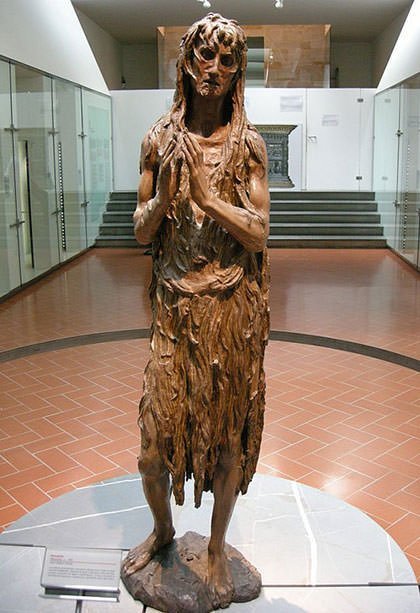
| Type: | Wood Statue |
| Location: | Museo dell’Opera del Duomo, Florence, Italy |
| Year: | 1455 |
Donatello’s abnormally weak and emaciated depiction of Mary Magdalene was in stark contrast to other depictions of her which usually showed a beautiful young woman in perfect health. Magdalene is said to have spent thirty years in the desert repenting for her sins which is what Donatello represents in this marvelous work. He thus ignored the Western legends by which Mary was daily fed by angels in the desert. Penitent Magdalene was received with awed admiration for its unprecedented realism and exquisite details. It remains one of Donatello’s most renowned works and is considered his greatest masterpiece in wood.
#2 Equestrian statue of Gattamelata
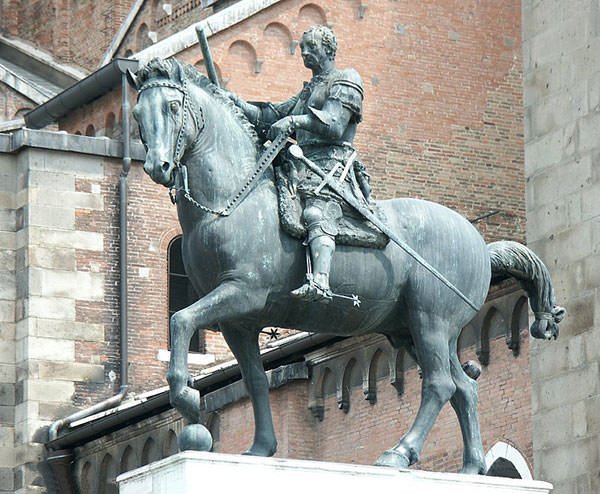
| Type: | Bronze Statue |
| Location: | Piazza del Santo, Padua, Italy |
| Year: | 1453 |
Erasmo of Narni, also known as Gattamelata (honeyed cat), was among the most famous condottieri or military leaders of Venice. After his death in 1443, his family granted Donatello the commission to create a statue of him. The result was vastly different from all equestrian statues made since antiquity. The facial expression of Gattamelata is dominant and determined; and he and his powerful horse are ready for action. Such is the grandeur, authority and power which the statue exhibits and such was its fame at the time that the King of Naples immediately wanted Donatello to do a similar statue of him. Equestrian statue of Gattamelata was the first to reintroduce the grandeur of Classical equestrian portraiture and is considered the ancestor of all the equestrian monuments erected since.
#1 David
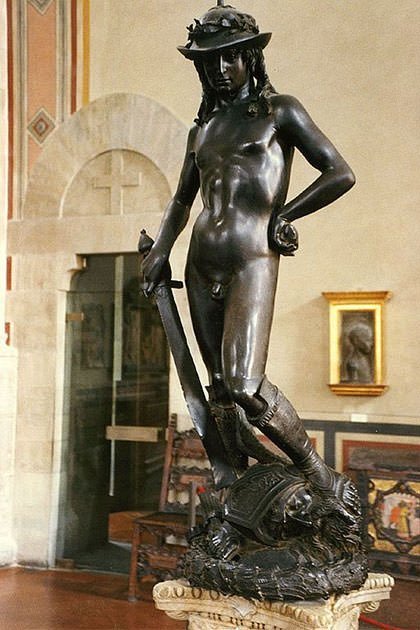
| Type: | Bronze Statue |
| Location: | Museo Nazionale del Bargello, Florence, Italy |
| Year: | 1440s |
The Bronze David is renowned for being the first large-scale free-standing nude statue since antiquity. It depicts David, of the story of David and Goliath, holding the sword of his defeated enemy and with his foot on Goliath’s severed head. David is completely naked, apart from a laurel-topped hat and boots. The well-proportioned and delicate figure of David bears contrast with the giant sword in his hand perhaps indicating the assistance of God in his achieving the incredible feat. Donatello also produced a marble statue of David in Gothic style earlier but it is nowhere as famous as this work which is considered his greatest masterpiece. Bronze David resides in the Museo Nazionale del Bargello in Florence.

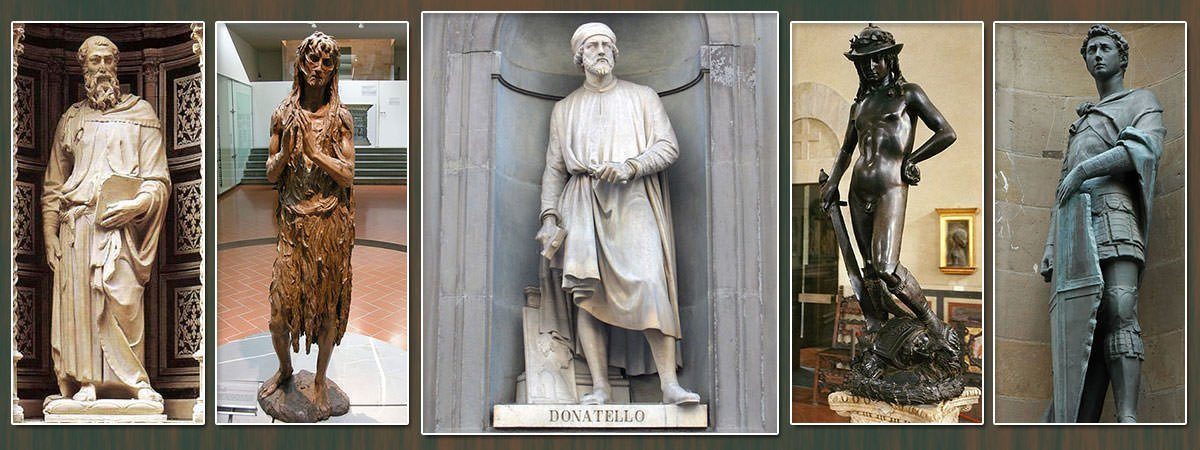
I can’t seem to find the information!!!